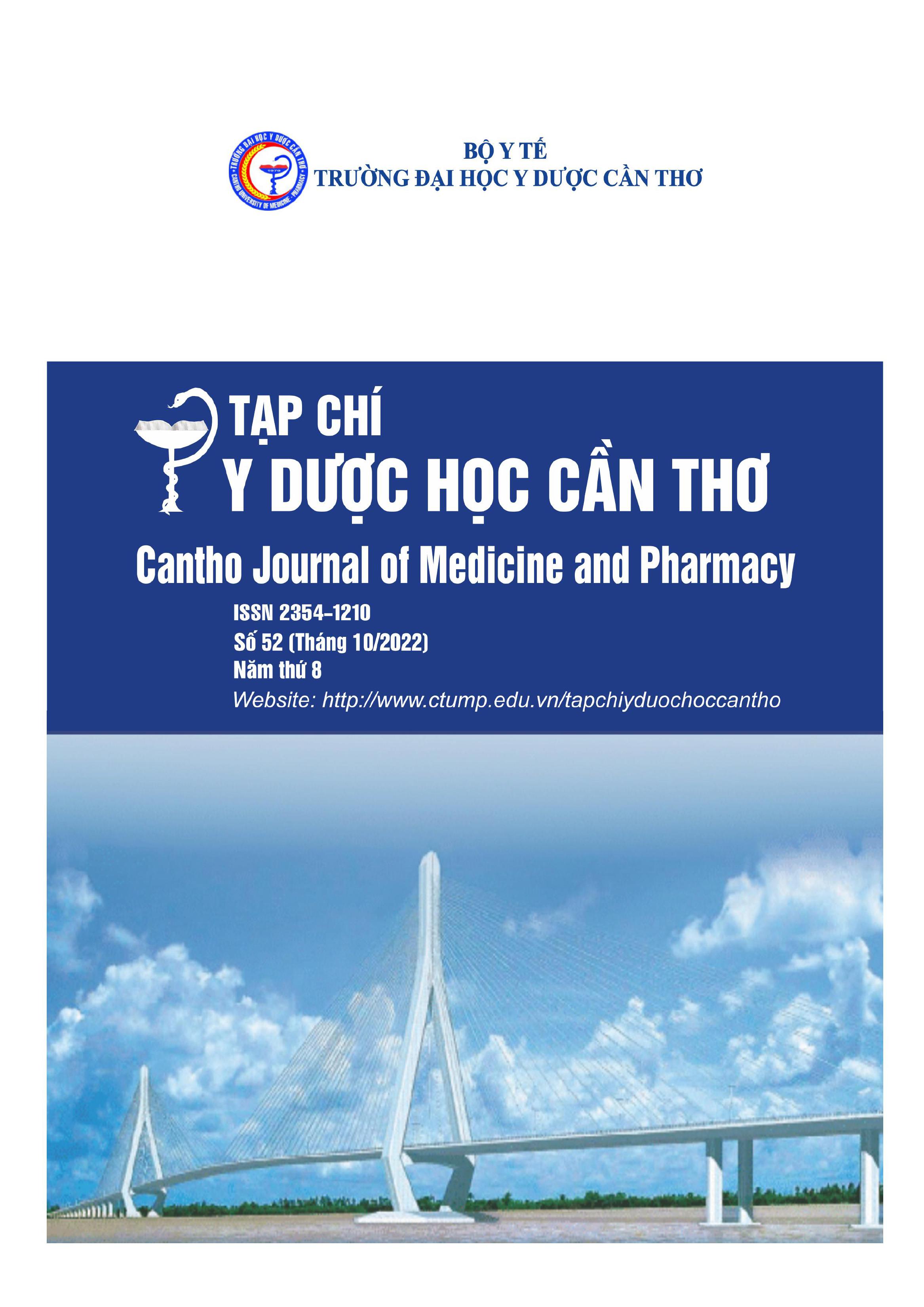EVALUATION OF THE RESULTS OF ENDOSCOPIC SURGERY FOR TREATMENT OF SEPTAL DEFORMITY WITH CONTACT POINT AT CAN THO ENT HOSPITAL
Main Article Content
Abstract
Background: To evaluate the results of the endoscopic surgery of septoplasty with contact point is essential for ENT clinicians. Objectives: To evaluate the results of the endoscopic surgeries for treatment of septal deformity with contact point. Materials and methods: 73 patients ≥18 years old, with nasal obstruction for more than 3 months due to nasal septum deformity with contact point and underwent endoscopic surgery at Can Tho ENT Hospital from June 2020 to April 2022. Prospective study with clinical intervention. Results: Average total score of NOSE (Nasal Obstruction Symptom Evaluation) before surgery (48.36), improvement after surgery was statistically significant (p<0.001) at 1 month (8.90), 2 months (2.05) and 3 months (0.55). Symptoms of headache, nasal discharge, sneezing and epistaxis were significantly improved. Laceration of the septal mucosa on one side in surgery accounted for 37% and there was 1 case (1.4%) laceration of the septal mucosa on both sides. There were no cases of postoperative complications such as perforation of the nasal septum, nasal adhesions or loss of smell. After 3 months of surgery, good treatment results reached 80.8%. Conclusion: Endoscopic surgery for treatment of septal deformity with contact point are done mainly to improve airflow or improve sinus drainage. The surgery gives good and safe treatment results. However, care should be taken when dissecting the septal mucosa at the point of contact.
Article Details
Keywords
Nasal septal deformity, contact point, endoscopic surgery
References
2. Nguyễn Quốc Dũng, Quách Thị Cần (2012), “Đánh giá kết quả phẫu thuật dị hình vách ngăn mũi bằng nội soi”, Tạp chí nghiên cứu Y học, 80(3), tr.98-106.
3. Trần Minh Hạnh (2015), “Nghiên cứu đặc điểm lâm sàng, cận lâm sàng và đánh giá kết quả phẫu thuật nội soi điều trị dị hình vách ngăn mũi gây nghẹt mũi tại Bệnh viện Tai Mũi Họng Cần Thơ”, Luận văn bác sĩ nội trú, Trường Đại học Y Dược Cần Thơ, Cần Thơ.
4. Nguyễn Công Hoàng (2017), “Đánh giá kết quả phẫu thuật nội soi chỉnh hình vách ngăn mũi tại khoa Tai Mũi Họng Bệnh viện Trung ương Thái Nguyên”, Tạp chí Y học Việt Nam, 455(1), tr.184-187.
5. Nghiêm Đức Thuận, Chữ Thị Hồng Ninh (2012), “Đánh giá hiệu quả của phẫu thuật nội soi chỉnh hình vách ngăn mũi tại khoa Tai Mũi Họng Bệnh viện 103”, Tạp chí Y Dược học quân sự, số 3, tr.85-88.
6. Nguyễn Triều Việt, Dương Hữu Nghị (2021), Giáo trình Tai Mũi Họng tập I, Trường Đại học Y Dược Cần Thơ, tr. 162-183.
7. Becker D. G. (2003), “Septoplasty and turbinate surgery”, Aesthetic Surgery Journal, 23(5), pp. 393-403.
8. Dell'Aversana Orabona G., Romano A., Abbate V., et al. (2018), “Effectiveness of endoscopic septoplasty in different types of nasal septal deformities: our experience with NOSE evaluation”, ACTA Otorhinolaryngologica Italica, 38(4), pp. 323-330.
9. Hong-Ryul Jin (2007), “New description method and classification system for septal deviation”, Journal of Rhinology, 14(1), pp. 27-31.
10. Kahveci O. K., Miman M. C., Yucel A., et al. (2012), “The efficiency of Nose Obstruction Symptom Evaluation (NOSE) scale on patients with nasal septal deviation”, Auris Nasus Larynx, 39(3), pp. 275-279.
11. Klimek L., Bergmann K. C., Biedermann T., et al. (2017), “Visual analogue scales (VAS): Measuring instruments for the documentation of symptoms and therapy monitoring in cases of allergic rhinitis in everyday health care”, Allergo Journal International, 26(1), pp. 16-24.
12. Stewart M. G., Witsell D. L., Smith T. L., et al. (2004), “Development and validation of the Nasal Obstruction Symptom Evaluation (NOSE) scale”, Otolaryngology–Head and Neck Surgery, 130(2), pp. 157-163.


